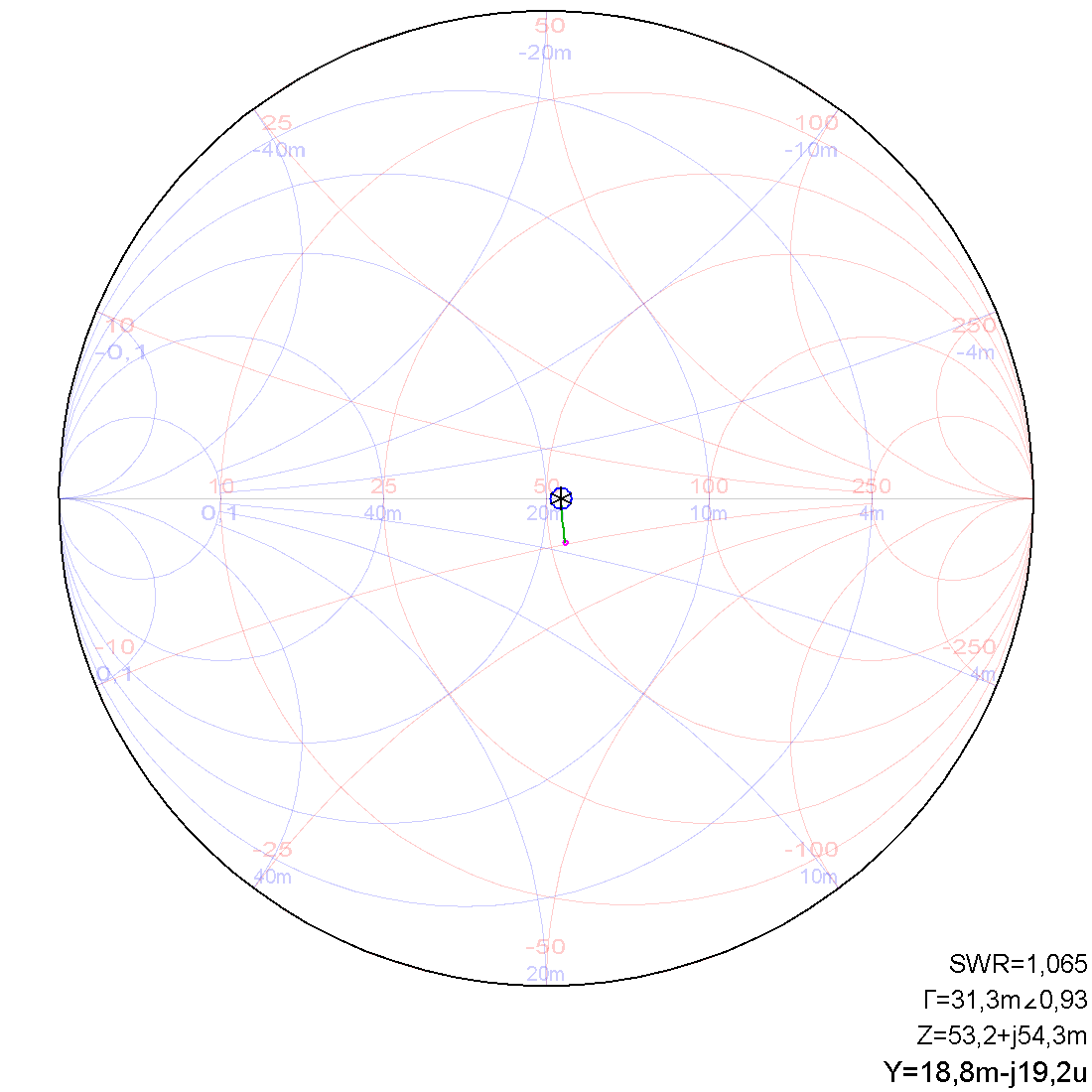SWRA730 February 2022 CC1311P3 , CC1311R3 , CC1312R , CC1312R7 , CC1314R10 , CC1352P , CC1352P7 , CC1352R , CC1354P10 , CC1354R10
- Trademarks
- Acronyms
- 1Description of the PCB Antenna
- 2Test Setup
- 3Unmatched Results
- 4Single-Band Matching and Result
-
5Dual Band Matching and Results
- 5.1 433-MHz and 2440-MHz Smith Chart, SWR, Bandwidth, and Efficiency
- 5.2 470-MHz and 2440-MHz Smith Chart, SWR, Bandwidth and Efficiency
- 5.3 490 MHz and 2440 MHz Smith Chart, SWR, Bandwidth and Efficiency
- 5.4 510-MHz and 2440-MHz Smith Chart, SWR, Bandwidth, and Efficiency
- 5.5 868/915 and 2440-MHz Smith Chart, SWR, Bandwidth, and Efficiency
- 6Summary - Bill of Materials and Results
- 7Conclusion
- 8References
4.5 868/915-MHz Smith Chart, SWR, Bandwidth, and Efficiency
As mentioned earlier in Section 3.2.5 the bandwidth of the antenna is sufficient to achieve a good match for 868 MHz and 915 MHz simultaneously. Hence we only need one matching network for both frequencies, and therefore tune the antenna for ( (915+896) / 2 ≈ ) 892 MHz.
Figure 4-17 shows the theoretical Smith chart for matching the antenna for single-band 892 MHz with a theoretical SWR of 1.065.
 Figure 4-17 Theoretical Smith Chart for Single-Band 892-MHz Matching
Figure 4-17 Theoretical Smith Chart for Single-Band 892-MHz MatchingFurther tuning of the resonance of the antenna was needed after realizing the theoretical match. Figure 4-18 and Figure 4-19 shows the resulting impedance and SWR which at 1.225 is less than the threshold for a good match of SWR < 2.0. Table 4-5 shows the BOM with components used to relies the matching network given in Figure 1-2.
The bandwidth of the antenna defined by SWR < 2.0 can be seen in Figure 4-19 to be 941.16-845.8 = 95.81 MHz.
| Ref. Designator | Murata Part Number | Value |
|---|---|---|
| Z60 | 0 Ω | |
| Z61 | DNM | |
| Z62 | DNM | |
| Z63 | 0 Ω | |
| Z64 | GRM0335C1H2R0CA01 | 2 pF |
Figure 4-20 and Figure 4-21 shows the radiation pattern of the antenna matched for 892 MHz radiating at 13 dBm 868/915 MHz. Table 4-6 shows the TRP and efficiency for the antenna with the given matching network
| Figure 38 | Figure 39 | |
|---|---|---|
| Frequency | 868 MHz | 915 MHz |
| Power setting | 13 dBm | 13 dBm |
| Conducted output power | 11.89 dBm | 12.83 dBm |
| TRP | 10.51 dBm | 12.71 dBm |
| Efficiency | 72.78 % | 97.27 % |